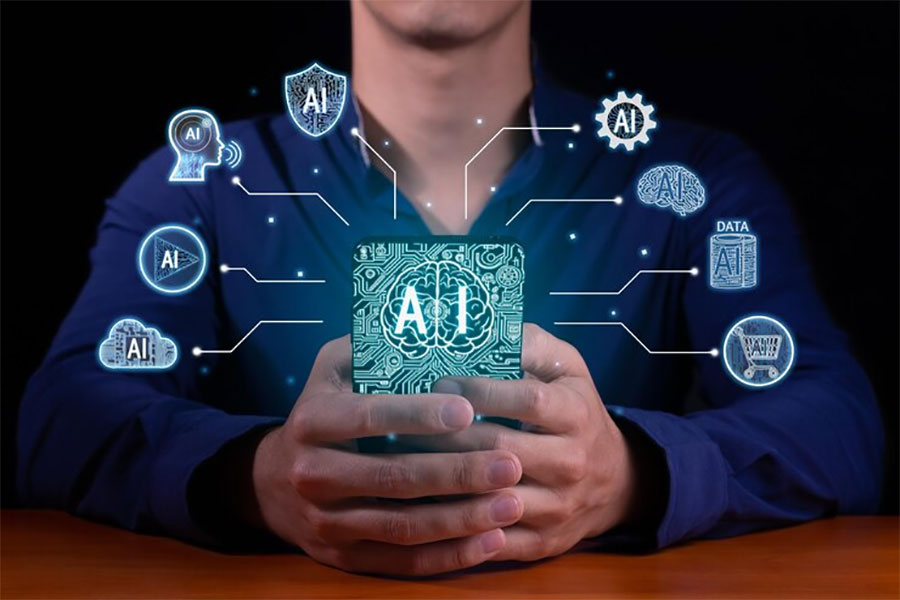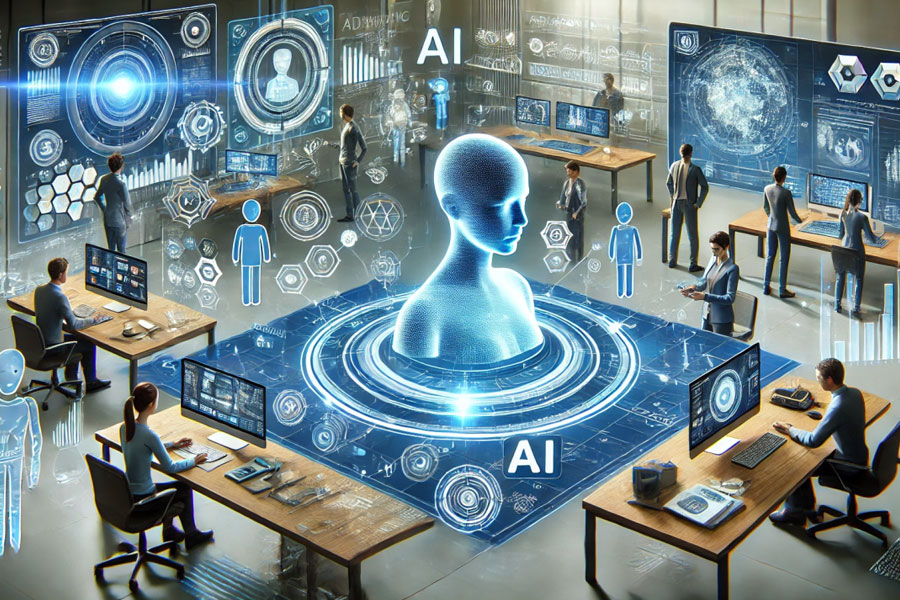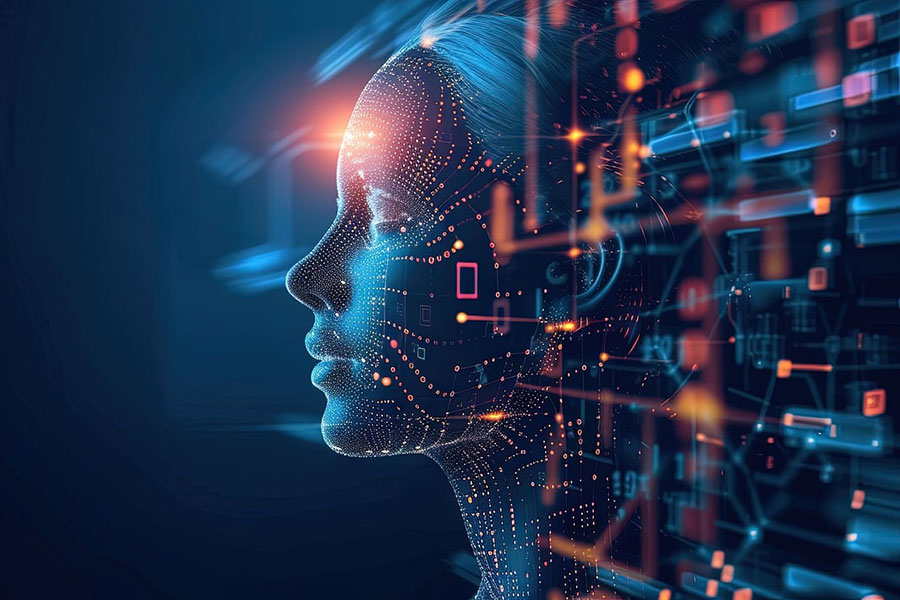Everything You Need to Know About Multi-agent Chatbot
As the use-cases for artificial intelligence and machine learning grows by the day, advanced chatbots have become a vital tool for businesses and users alike.
They facilitate customer service, streamline operations, and even provide companionship. But as the needs of users grow more complex, so does the technology that serves them.
Enter the multi-agent chatbot, a sophisticated evolution of the traditional single-agent chatbot.
What is a Multi-Agent Chatbot?
A multi-agent chatbot is a system that uses multiple agents – essentially independent units or bots – that work together to handle different tasks or aspects of a conversation.
Unlike traditional single-agent chatbots, which attempt to handle all user interactions on their own, multi-agent chatbots delegate different tasks to specialized agents.
This approach allows for more complex, nuanced, and efficient interactions.
How do multi-agent chatbots work?
In a nutshell, multi-agent chatbots function through the collaboration of several specialized bots. Each bot is designed to perform a specific function as given below.
Intent Recognition
Role – Identifies the user’s intent based on their input.
Natural Language Processing (NLP) – Utilizes NLP techniques to understand the user’s query.
Machine Learning Algorithms – Employs algorithms to classify the intent, such as whether the user wants to make a purchase, seek information, or get support.
Contextual Understanding – Takes into account previous interactions to accurately determine the user’s current intent.
Entity Extraction
Role – Pulls out relevant data points from the user’s message.
Named Entity Recognition (NER) – Uses NER to identify specific entities like dates, names, locations, and product names.
Data Parsing – Parses the text to extract structured information that can be used by other agents.
Predefined Templates – Applies templates to ensure consistent extraction of key data points.
Task Management
Role – Handles specific tasks like booking a ticket or providing customer support.
Task-Specific Bots – Deploys specialized bots tailored to handle distinct tasks (e.g., booking, order processing).
Workflow Automation – Automates workflows to streamline task execution.
Integration with External Systems – Connects with external APIs and databases to fetch or update information as required.
Context Management
Role – Maintains the context of the conversation, ensuring that the dialogue remains coherent and relevant.
Session Management – Tracks the state of the conversation across multiple interactions.
Contextual Memory – Stores relevant information from previous interactions to maintain a coherent dialogue.
Disambiguation – Resolves ambiguities by referring to the context and ensuring clarity.
Here’s a simplified example of how a multi-agent chatbot might handle a customer service query
- User Input – The user types, “I need help with my order.”
- Intent Recognition Agent – Determines that the user needs assistance with an order.
- Entity Extraction Agent – Identifies keywords like “help” and “order.”
- Task Management Agent – Directs the query to a customer service bot that specializes in order issues.
- Context Management Agent – Keeps track of the conversation history to ensure that the user’s issue is resolved efficiently.
Here’s a detailed breakdown
To illustrate how a multi-agent chatbot works in practice, here’s a breakdown of the previous example.
User Input
The user types, “I need help with my order.”
Intent Recognition Agent
Initial Analysis
Analyzes the input to determine the user’s intent.
Intent Classification
Classifies the intent as a request for order assistance.
Entity Extraction Agent
Keyword Identification
Identifies critical keywords like “help” and “order.”
Entity Parsing
Extracts specific entities such as the order number if mentioned or prompts the user for additional details.
Task Management Agent
Routing
Directs the query to a customer service bot that specializes in order issues.
Sub-task Allocation
If the task requires multiple steps (e.g., checking order status and processing a return), it allocates these to relevant sub-agents.
Context Management Agent
History Tracking
Keeps track of the conversation history, including previous interactions related to the current query.
Contextual Continuity
Ensures that all agents have access to the relevant context to provide coherent responses.
Benefits of multi-agent chatbots
Enhanced Specialization – By dividing tasks among different agents, multi-agent chatbots can provide more specialized and accurate responses.
Scalability – They can handle a higher volume of interactions by distributing the workload across multiple agents.
Flexibility – Multi-agent systems can be easily updated or expanded. New agents can be added without disrupting the entire system.
Improved User Experience – Users can enjoy smoother and more contextually aware interactions, leading to higher satisfaction rates.
Efficiency – Tasks can be processed in parallel, reducing response times and increasing overall efficiency.
Use cases of multi-agent chatbots
Multi-agent chatbots are versatile and can be applied in various domains.
Customer Service – Automating and enhancing customer support with specialized agents handling different types of queries.
E-commerce – Assisting users with product recommendations, order tracking, and post-purchase support.
Healthcare – Providing medical information, scheduling appointments, and managing patient data.
Finance – Offering financial advice, processing transactions, and answering customer inquiries about accounts.
Challenges
Despite their advantages, multi-agent chatbots come with their own set of challenges.
Coordination Complexity – Ensuring seamless communication and coordination between multiple agents can be technically challenging.
Development and Maintenance – Building and maintaining a multi-agent system is more complex and resource-intensive than single-agent systems.
Data Privacy – Managing sensitive user data across multiple agents requires stringent security measures.
The future of multi-agent chatbots
As AI and machine learning technologies advance, multi-agent chatbots will become even more sophisticated. Future developments might include –
Improved Natural Language Understanding (NLU) – Enhancing the ability of agents to understand and process human language more naturally.
Adaptive Learning – Enabling agents to learn and adapt from user interactions in real-time.
Seamless Integration – Integrating with other AI systems and platforms to provide a unified user experience.
Ethical AI – Ensuring that multi-agent systems operate ethically and transparently, especially in handling sensitive data.
Multi-agent chatbots represent a significant leap forward in AI technology
The power of multiple specialized agents offer more robust, efficient, and user-friendly interactions. As technology continues to advance, multi-agent chatbots will undoubtedly play a big role in shaping the future of digital communication and automation.
Whether you’re a business looking to enhance customer service or a developer exploring the frontiers of AI, understanding and leveraging multi-agent chatbots will be crucial in the years to come.
Why not get ahead of the competition? Enquire Now!












